
Why Therapists Must Consciously Embrace Their Wounded Healer Role
Four decades after its publication, Alice Miller’s “The Drama of the Gifted Child” remains one of the most important texts for understanding both the psychology of the helping professions and the hidden dynamics that can sabotage therapeutic relationships. Miller’s insights into how sensitive children become caretakers—and how these caretakers often become therapists—offer crucial wisdom for contemporary mental health professionals navigating an increasingly complex clinical landscape.
What makes Miller’s work particularly urgent today is her unflinching examination of how therapists’ unresolved childhood wounds can unconsciously contaminate the therapeutic space. In an era where trauma-informed care has become the gold standard, Miller’s call for therapists to consciously engage with their wounded healer identity rather than unconsciously project their childhood patterns onto clients has never been more relevant.
The Gifted Child Grows Up: Understanding the Therapist’s Journey
Miller’s central insight was devastatingly simple: children who are particularly sensitive, intelligent, and attuned often become the emotional caretakers in their families. These “gifted” children—gifted not necessarily in the traditional sense but in their capacity for emotional attunement—learn early to read their parents’ needs and adapt accordingly. They become experts at sensing what others require and providing it, often at the cost of their own authentic development.
The tragedy Miller identified is that these children grow up to be adults who are extraordinarily capable of understanding and meeting others’ needs while remaining strangers to their own. They develop what Miller called a “false self”—a highly functional persona that can navigate the world successfully but lacks genuine vitality and authenticity. Meanwhile, their “true self”—with all its legitimate needs, feelings, and desires—remains buried beneath layers of adaptation and defense.
This dynamic creates what appears to be a perfect storm for entering the helping professions. These grown-up gifted children possess an almost uncanny ability to attune to others’ emotional states. They have spent their lives developing the very skills that make for effective therapists: empathy, intuition, the ability to hold space for difficult emotions, and a deep understanding of psychological defense mechanisms. They know intimately the territory of emotional pain because they have navigated it themselves.
The Shadow Side of Natural Empathy
However, Miller recognized a crucial shadow side to this apparent gift. When therapists enter the profession without having done their own deep healing work, they risk recreating the very dynamics that wounded them in childhood. Just as they once unconsciously attuned to their parents’ needs, they may now unconsciously use their clients to meet their own unrecognized emotional needs.
This can manifest in numerous subtle ways:
The Need to Be Needed: Therapists who haven’t grieved their childhood role as caretaker may unconsciously keep clients dependent, subtly discouraging genuine autonomy. They may feel threatened when clients begin to individuate and no longer need them in the same way, mirroring the dynamic with their parents who needed them to remain in the caretaker role.
Vicarious Healing: Without conscious awareness, therapists may attempt to heal their own childhood wounds through their clients’ progress. A therapist who wasn’t allowed to express anger as a child might unconsciously push clients to express rage, not because it serves the client’s healing but because it provides vicarious satisfaction for the therapist’s exiled parts.
Projection of the Idealized Parent: Many gifted children longed for the attuned, caring parent they never had. As therapists, they may unconsciously attempt to be this perfect parent for their clients, creating an idealized relationship that ultimately prevents clients from working through their legitimate grievances with their actual parents.
Emotional Fusion: The gifted child’s survival strategy often involved becoming emotionally fused with their parents. Without conscious work to differentiate, therapists may recreate this fusion with clients, losing appropriate boundaries and becoming overly involved in clients’ lives and outcomes.
The Unconscious Repetition Compulsion in the Therapy Room
Miller’s work illuminates how the therapy room can become a stage for the unconscious repetition of childhood dynamics. A therapist who learned to earn love through perfect attunement may find themselves exhausting themselves trying to be the perfect therapist. One who could never satisfy their parents’ needs may find themselves feeling perpetually inadequate with difficult clients. The therapist who learned that their own needs were burdensome may struggle to maintain appropriate boundaries or engage in necessary self-care.
These patterns operate outside conscious awareness, making them particularly insidious. The therapist believes they are acting in the client’s best interest, unaware that they are actually reenacting old scripts. This unconscious material doesn’t just impact the therapist’s wellbeing—it directly affects the quality of care clients receive.
When therapists are unconsciously driven by their own unmet needs, they cannot provide the clear, boundaried, authentic presence that facilitates genuine healing. Instead, they offer a contaminated field where their own wounds and defenses intermingle with the client’s material. This can lead to:
- Misattuned interventions based on the therapist’s needs rather than the client’s
- Countertransference enactments that recreate rather than heal trauma patterns
- Therapist burnout as they unconsciously recreate exhausting childhood dynamics
- Client harm when therapists’ unprocessed material influences treatment decisions
The Conscious Wounded Healer: A Different Path
Miller’s solution was not for wounded individuals to avoid becoming therapists—indeed, she recognized that many of the best therapists are drawn to the field precisely because of their intimate knowledge of suffering. Instead, she called for therapists to consciously engage with their wounded healer identity through their own deep therapeutic work.
The conscious wounded healer differs dramatically from the unconscious one:
Self-Awareness: Conscious wounded healers have done extensive personal therapy to understand their own childhood patterns, wounds, and defenses. They know their triggers, their tendencies toward projection, and their areas of vulnerability. This self-knowledge allows them to differentiate between their own material and their clients’.
Ongoing Work: They recognize that healing is not a destination but an ongoing journey. They continue their own therapy, engage in regular supervision or consultation, and maintain practices that support their continued growth and self-awareness.
Appropriate Boundaries: Having grieved their childhood role as emotional caretaker, conscious wounded healers can maintain clear, compassionate boundaries. They can care deeply without becoming enmeshed, and they can tolerate clients’ difficult emotions without needing to fix or rescue.
Genuine Empathy: Their empathy comes not from fusion or projection but from genuine understanding. Having faced their own pain, they can accompany others through theirs without being overwhelmed or needing to control the process.
Acceptance of Limitations: Conscious wounded healers have made peace with their human limitations. They no longer need to be the perfect parent/therapist and can tolerate being “good enough.” This allows clients the space to have their own experience rather than performing for the therapist’s needs.
The Contemporary Relevance: Trauma-Informed Care and Beyond
Miller’s insights have become even more relevant in our current era of trauma-informed care. As we’ve developed a more sophisticated understanding of trauma’s impact on development, we’ve also recognized how prevalent developmental trauma is among mental health professionals. Studies consistently show that therapists report higher rates of childhood adversity than the general population.
This isn’t necessarily problematic—in fact, lived experience of trauma can provide invaluable insights and empathy. However, it becomes problematic when this trauma remains unprocessed and unconscious. The current emphasis on trauma-informed care must extend to therapists themselves. We cannot provide truly trauma-informed treatment if we haven’t informed ourselves about our own trauma.
Moreover, the contemporary therapeutic landscape presents new challenges that make Miller’s work especially pertinent:
The Pressure for Quick Fixes: In an era of brief, manualized treatments, therapists may feel pressure to provide rapid symptom relief. Gifted child therapists, with their history of meeting others’ needs, may be particularly vulnerable to sacrificing depth for the appearance of quick progress.
The Social Media Therapist: The rise of therapist influencers creates new venues for unconscious enactment. The need for validation that many gifted children carry can be unconsciously fed through likes, follows, and public acclaim, potentially compromising clinical judgment.
Vicarious Trauma: The contemporary awareness of vicarious trauma makes Miller’s insights about therapist self-care crucial. Gifted children who learned to absorb others’ emotions are at particular risk for vicarious traumatization if they haven’t developed conscious strategies for differentiation.
The Democratization of Therapy: As therapy becomes less stigmatized and more accessible, more people are entering the field. This makes it even more crucial that training programs address the wounded healer phenomenon directly rather than pretending therapists are blank slates.
Practical Implications: Conscious Wounded Healing in Practice
Embracing the conscious wounded healer path requires specific commitments and practices:
Personal Therapy: This isn’t optional for ethical practice. Therapists need their own deep, ongoing therapeutic work—not just a few sessions to check a box, but real engagement with their own wounds and patterns. This therapy should specifically explore childhood dynamics and how they might manifest in clinical work.
Supervision with a Trauma Lens: Clinical supervision should include explicit attention to the therapist’s own trauma history and how it might be showing up in the work. Supervisors need training in recognizing and addressing wounded healer dynamics.
Body-Based Practices: Since much of our childhood wounding is held somatically, intellectual insight alone isn’t sufficient. Therapists benefit from body-based practices that help them recognize and regulate their own nervous systems.
Regular Self-Reflection: Conscious wounded healers develop practices of regular self-reflection, perhaps through journaling, meditation, or peer consultation groups focused on countertransference and personal process.
Community and Connection: Isolation feeds unconscious patterns. Conscious wounded healers prioritize genuine connection with peers who can offer honest feedback and support.
Boundaries as Sacred Practice: Rather than seeing boundaries as cold or withholding, conscious wounded healers understand them as sacred containers that allow genuine healing to occur. They practice saying no, taking breaks, and prioritizing their own wellbeing.
The Revolutionary Act of Conscious Healing
Miller’s work ultimately points toward a revolutionary reimagining of what it means to be a therapist. Rather than pretending to be objective, blank-slate clinicians, we can acknowledge the wounded healer within while taking responsibility for our own healing journey. This isn’t about naval-gazing or making therapy about the therapist—it’s about ensuring that we offer clients a clear, uncontaminated space for their own growth.
When therapists embrace their wounded healer identity consciously, something profound shifts. They no longer need to hide behind professional personas or pretend to have it all together. They can meet clients human to human, offering genuine empathy born from their own healing journey while maintaining the professional boundaries that keep the work focused on the client’s needs.
This conscious approach also models something powerful for clients. When they sense (as they inevitably do) that their therapist is a fellow traveler on the healing journey rather than an untouchable expert, it can reduce shame and increase hope. If the therapist can heal and grow, so can they.
The Ongoing Journey
Miller’s legacy challenges us to see therapist development not as something that ends with licensure but as an ongoing, lifelong journey. Just as we now understand that trauma healing is not a linear process with a clear endpoint, so too is the development of the conscious wounded healer.
Each new client, each challenging clinical situation, each life transition can activate new layers of our own material. The conscious wounded healer approaches these activations with curiosity rather than shame, seeing them as opportunities for continued growth rather than evidence of failure.
This ongoing journey requires humility, courage, and tremendous self-compassion. It asks us to face parts of ourselves we might prefer to keep hidden, to grieve losses we might prefer to minimize, and to feel feelings we learned early to exile. But it’s precisely this willingness to engage with our own depths that allows us to accompany others into theirs.
The Gift Within the Wound
Alice Miller’s “Drama of the Gifted Child” remains essential reading for anyone in the helping professions precisely because it refuses to let us hide behind our competence. It insists that we look at the childhood wounds that drew us to this work and take responsibility for healing them.
This isn’t about pathologizing therapists or suggesting that wounded people shouldn’t enter the field. On the contrary, it’s about recognizing that our wounds, consciously engaged with, can become our greatest gifts as healers. The sensitivity that made us vulnerable as children can become exquisite attunement as adults. The pain we’ve experienced can become the compassion we offer. The healing journey we’ve undertaken can become the roadmap we share with others.
But this transformation from wound to gift requires consciousness. It requires us to do our own work, to face our own pain, and to take responsibility for our own healing. It requires us to recognize when we’re unconsciously using clients to meet our own needs and to course-correct with humility and grace.
In a world desperate for authentic healing, we cannot afford to have therapists operating from unconscious childhood patterns. Our clients deserve better, and frankly, so do we. Miller’s work calls us to a higher standard—not perfection, but consciousness. Not invulnerability, but authentic engagement with our own vulnerability.
The conscious wounded healer recognizes that their greatest credential is not their degree or their training but their willingness to walk the path they’re asking clients to walk. They understand that healing happens not through the therapist’s perfection but through their humanity, consciously engaged with and responsibly managed.
As we face a mental health crisis of unprecedented proportions, Miller’s insights offer both a warning and a promise. The warning is clear: unconscious wounded healers can perpetuate the very patterns they seek to heal. But the promise is equally clear: when we consciously engage with our wounded healer identity, we become capable of facilitating profound transformation—not just for our clients, but for the field of psychotherapy itself.
The drama of the gifted child need not end in tragedy. When we bring consciousness to our wounds, they become the fertile ground from which genuine healing grows. This is Miller’s enduring gift to the field: the recognition that our wounds and our gifts are inextricably linked, and that conscious engagement with both is the key to becoming the healers our world desperately needs.
Bibliography
Barnett, J. E. (2007). In search of the effective therapist: The history and psychology of therapists’ self-care. Professional Psychology: Research and Practice, 38(6), 603-612.
Cain, N. R. (2000). Psychotherapists with personal histories of psychiatric hospitalization: Countertransference in wounded healers. Psychiatric Rehabilitation Journal, 24(1), 22-29.
Cushway, D. (1996). Tolerance begins at home: The development of stress-resistant therapists. Clinical Psychology Forum, 94, 25-28.
Farber, B. A., Manevich, I., Metzger, J., & Saypol, E. (2005). Choosing psychotherapy as a career: Why did we cross that road? Journal of Clinical Psychology, 61(8), 1009-1031.
Figley, C. R. (2002). Compassion fatigue: Psychotherapists’ chronic lack of self care. Journal of Clinical Psychology, 58(11), 1433-1441.
Gilroy, P. J., Carroll, L., & Murra, J. (2002). A preliminary survey of counseling psychologists’ personal experiences with psychological distress and impairment. Professional Psychology: Research and Practice, 33(2), 139-149.
Herman, J. L. (1992). Trauma and Recovery: The Aftermath of Violence from Domestic Abuse to Political Terror. New York: Basic Books.
Jung, C. G. (1951). Fundamental questions of psychotherapy. In The Practice of Psychotherapy, CW 16. Princeton: Princeton University Press.
Kottler, J. A. (2010). On Being a Therapist (4th ed.). San Francisco: Jossey-Bass.
Maeder, T. (1989). Wounded healers. The Atlantic Monthly, 263(1), 37-47.
Miller, A. (1981). The Drama of the Gifted Child: The Search for the True Self. New York: Basic Books.
Miller, A. (1983). For Your Own Good: Hidden Cruelty in Child-Rearing and the Roots of Violence. New York: Farrar, Straus and Giroux.
Miller, A. (1984). Thou Shalt Not Be Aware: Society’s Betrayal of the Child. New York: Farrar, Straus and Giroux.
Norcross, J. C., & Guy, J. D. (2007). Leaving It at the Office: A Guide to Psychotherapist Self-Care. New York: Guilford Press.
Orlinsky, D. E., & Rønnestad, M. H. (2005). How Psychotherapists Develop: A Study of Therapeutic Work and Professional Growth. Washington, DC: American Psychological Association.
Pope, K. S., & Feldman-Summers, S. (1992). National survey of psychologists’ sexual and physical abuse history and their evaluation of training and competence in these areas. Professional Psychology: Research and Practice, 23(5), 353-361.
Rippere, V., & Williams, R. (Eds.). (1985). Wounded Healers: Mental Health Workers’ Experiences of Depression. Chichester: Wiley.
Rothschild, B. (2006). Help for the Helper: The Psychophysiology of Compassion Fatigue and Vicarious Trauma. New York: W.W. Norton.
Sedgwick, D. (1994). The Wounded Healer: Countertransference from a Jungian Perspective. London: Routledge.
Sussman, M. B. (1995). A Perilous Calling: The Hazards of Psychotherapy Practice. New York: Wiley.
Van der Kolk, B. (2014). The Body Keeps the Score: Brain, Mind, and Body in the Healing of Trauma. New York: Viking.
Wheeler, S. (2007). What shall we do with the wounded healer? The supervisor’s dilemma. Psychodynamic Practice, 13(3), 245-256.
Yalom, I. D. (2002). The Gift of Therapy: An Open Letter to a New Generation of Therapists and Their Patients. New York: HarperCollins.
Zerubavel, N., & Wright, M. O. (2012). The dilemma of the wounded healer. Psychotherapy, 49(4), 482-491.

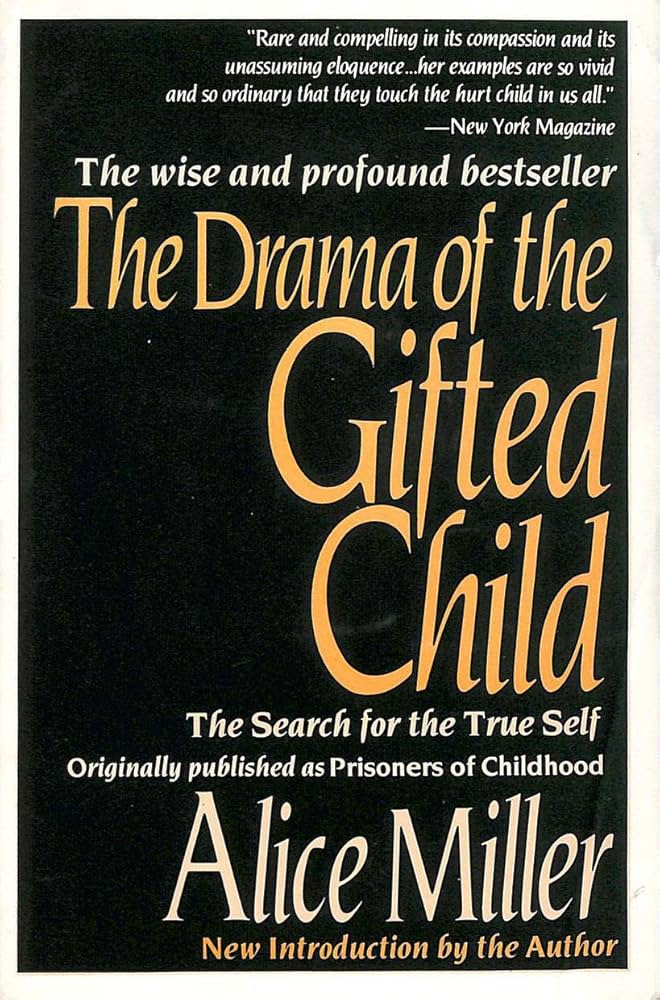

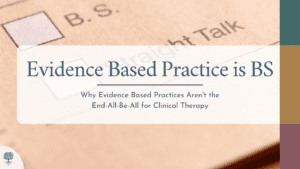
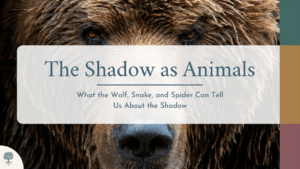
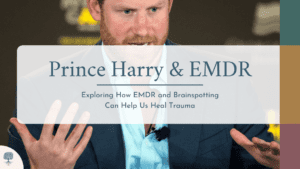


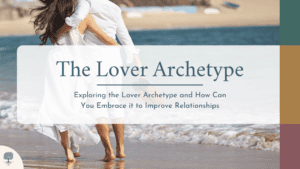
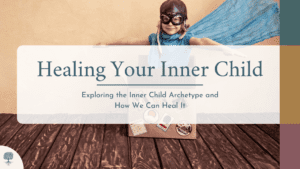

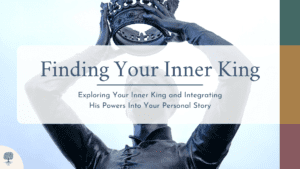

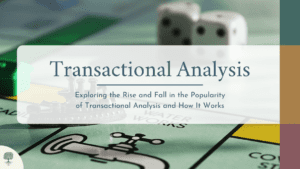
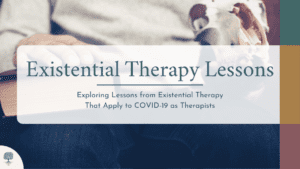
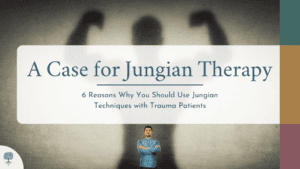
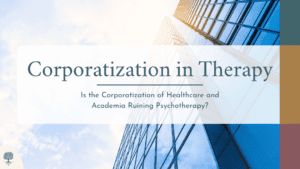


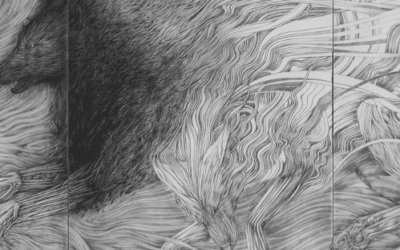
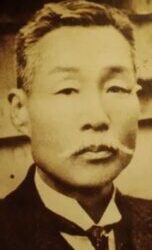

0 Comments